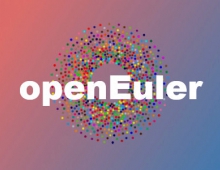Linux Raid Guide
2. Partitioning
Ok, I'm not really going to show you how to get root access. Let's assume that you have root access and proceed to the next step.
PartitioningThis is not hard, if you know how to make partitions with any of the popular linux tools, like cfdisk, fdisk, sfdisk and parted. My favorite is cfdisk, because it is relatively easier and confusion has to be avoided when partitioning your drive! Your distribution definitely includes one or more of these tools and, quite possibly, a graphical front-end for KDE or Gnome, so choose the one that suits you best. All you have to do is make two partitions of the approximate same size (say 10GB or whatever you think is necessary for your most important files) and mark them as “fd” instead of “82” or “83”. This last step is particularly important, because “fd” marks the partition as Linux RAID autodetect and enables the kernel to recognize it at boot time as part of a RAID setup.
―DANGER―
Creating and deleting partitions can result in loss of data. Be really careful.
Backup your drives at this point. No, not later. Now.
You partition table should contain the new partition, marked as Linux raid autodetect. Repeat the process for both disks, of course. In the following example, /dev/sdb5 and /dev/sda5 will be used as part of the RAID mirror. The fact that they are both fifth is irrelevant, we could have used /dev/sdb1 and /dev/sda3, but not /dev/sda1 and /dev/sda2, because they are on the same device:

The output from /dev/sda follows, here too we have a partition of equal length (97659103 blocks), marked as Linux raid autodetect (fd):

Now we have to ensure that the system RAID devices are available under /dev (ls -l /dev/md* or ls -l /dev/md/*). Most probably they are available. If not, you can create them with (mdadm can also do that automatically, but you should also know how to do it by hand):
![]()
or (depending on your /dev structure)

We will now assume that you will use the /dev/md0 device, so substitute accordingly if you're using /dev/md/0 or /dev/md1, for example. You are free to use any other name, of course, like /dev/md/home or /dev/md/stuff. You only need one md device for every RAID array.





















